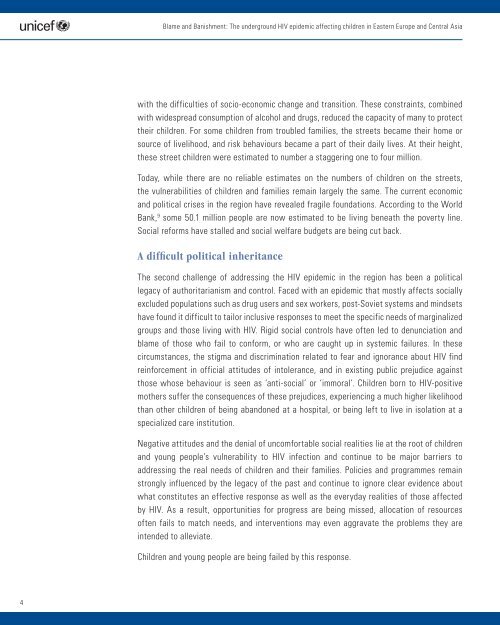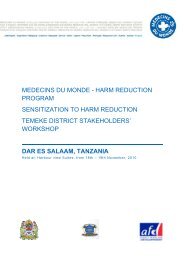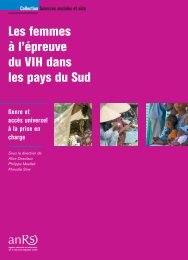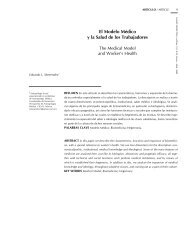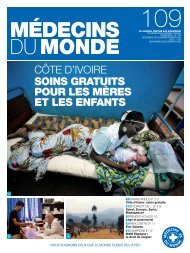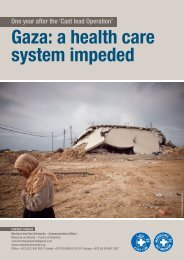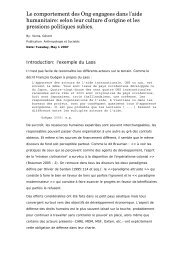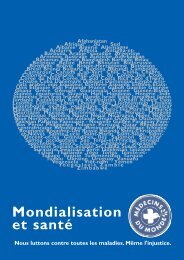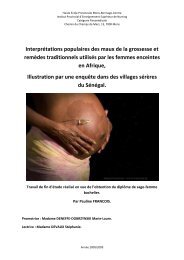Blame & Banishment - Médecins du Monde
Blame & Banishment - Médecins du Monde
Blame & Banishment - Médecins du Monde
Create successful ePaper yourself
Turn your PDF publications into a flip-book with our unique Google optimized e-Paper software.
<strong>Blame</strong> and <strong>Banishment</strong>: The underground HIV epidemic affecting children in Eastern Europe and Central Asia<br />
with the difficulties of socio-economic change and transition. These constraints, combined<br />
with widespread consumption of alcohol and drugs, re<strong>du</strong>ced the capacity of many to protect<br />
their children. For some children from troubled families, the streets became their home or<br />
source of livelihood, and risk behaviours became a part of their daily lives. At their height,<br />
these street children were estimated to number a staggering one to four million.<br />
Today, while there are no reliable estimates on the numbers of children on the streets,<br />
the vulnerabilities of children and families remain largely the same. The current economic<br />
and political crises in the region have revealed fragile foundations. According to the World<br />
Bank, 9 some 50.1 million people are now estimated to be living beneath the poverty line.<br />
Social reforms have stalled and social welfare budgets are being cut back.<br />
A difficult political inheritance<br />
The second challenge of addressing the HIV epidemic in the region has been a political<br />
legacy of authoritarianism and control. Faced with an epidemic that mostly affects socially<br />
excluded populations such as drug users and sex workers, post-Soviet systems and mindsets<br />
have found it difficult to tailor inclusive responses to meet the specific needs of marginalized<br />
groups and those living with HIV. Rigid social controls have often led to denunciation and<br />
blame of those who fail to conform, or who are caught up in systemic failures. In these<br />
circumstances, the stigma and discrimination related to fear and ignorance about HIV find<br />
reinforcement in official attitudes of intolerance, and in existing public prejudice against<br />
those whose behaviour is seen as ‘anti-social’ or ‘immoral’. Children born to HIV-positive<br />
mothers suffer the consequences of these prejudices, experiencing a much higher likelihood<br />
than other children of being abandoned at a hospital, or being left to live in isolation at a<br />
specialized care institution.<br />
Negative attitudes and the denial of uncomfortable social realities lie at the root of children<br />
and young people’s vulnerability to HIV infection and continue to be major barriers to<br />
addressing the real needs of children and their families. Policies and programmes remain<br />
strongly influenced by the legacy of the past and continue to ignore clear evidence about<br />
what constitutes an effective response as well as the everyday realities of those affected<br />
by HIV. As a result, opportunities for progress are being missed, allocation of resources<br />
often fails to match needs, and interventions may even aggravate the problems they are<br />
intended to alleviate.<br />
Children and young people are being failed by this response.<br />
4


